
Die Ausstellung zum Thema „Bauhaus und Nationalsozialismus“ verdeutlicht die vielfältigen Wege, die Künstlerinnen und Künstler im Umgang mit einem totalitären Herrschaftssystem eingeschlagen haben. Sie will damit neue, auch unbequeme Perspektiven auf die Bauhausgeschichte aufzeigen. Denn noch lange nach 1945 hielt sich die Illusion einer einzig „guten" und verfolgten Moderne. Eine innovative künstlerische Haltung allein, so zeigen die Schicksale vieler Bauhaus-Angehörigen, schützt noch nicht gegen die Verführbarkeit durch den Faschismus. Dies macht die Rolle der Kunst in einer liberalen und weltoffenen Gesellschaft zu einem zentralen Thema der Ausstellung.
Komplettiert wird die dreiteilige Ausstellung durch die Installation „Denkmal über Ehrlichkeit", das aus den berühmten Typenmöbeln 602 des Bauhäuslers Franz Ehrlich gebaut wurde. Die Installation der Designforscher Friedrich von Borries, Frieder Bohaumilitzky und Jens-Uwe Fischer dekonstruiert die komplexe Biografie des Bauhaus-Architekten, Grafikers und Designers Ehrlich (1907-1984), der außerdem Widerstandskämpfer und Buchenwaldhäftling war, aber auch SS-Architekt, Stasi-Informant und Hochstapler. Ausgehend von seiner Geschichte hinterfragt das Denkmal die dominanten Selbstverständnisse der Gegenwart: Wie ehrlich sind wir?

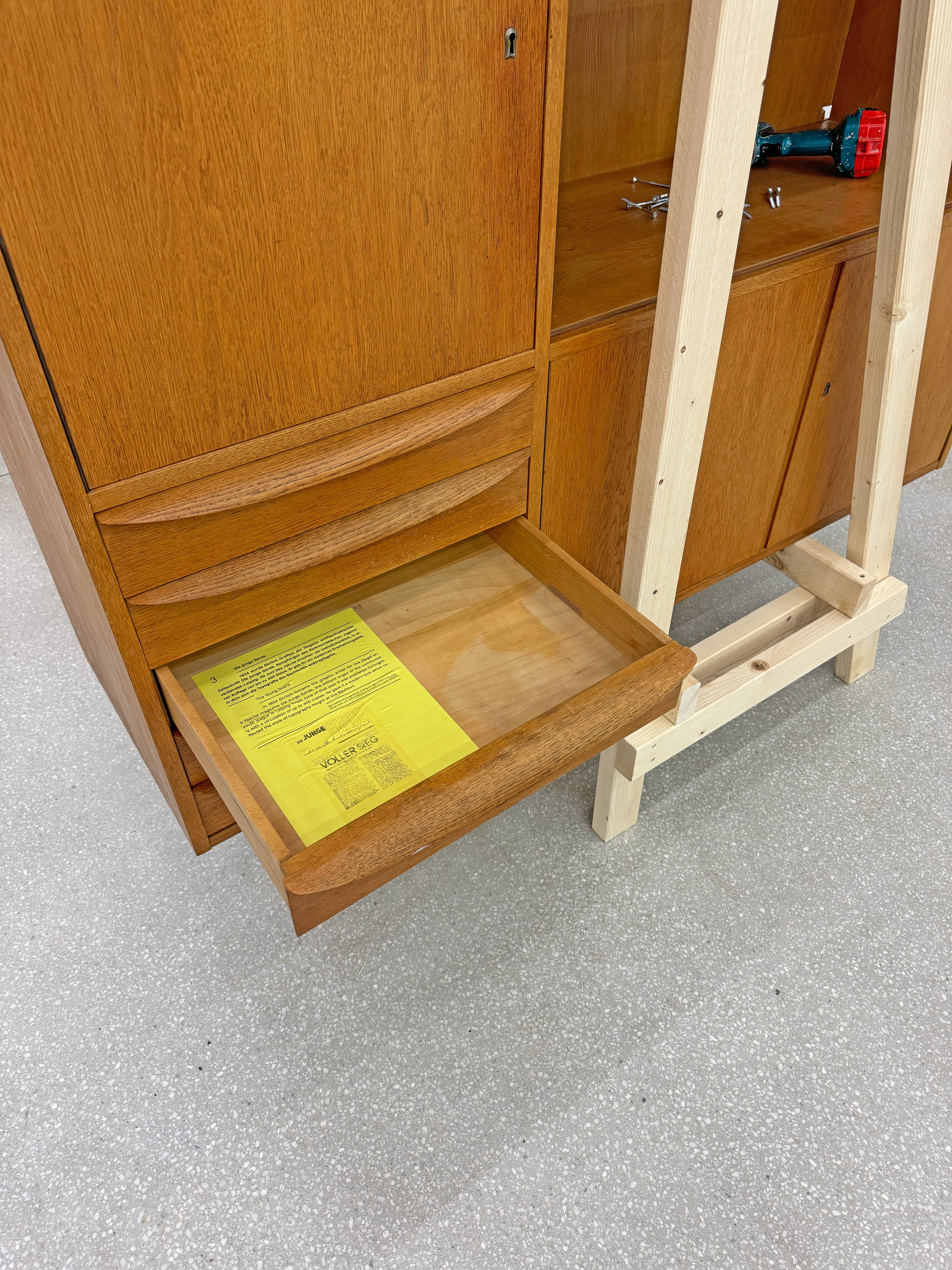
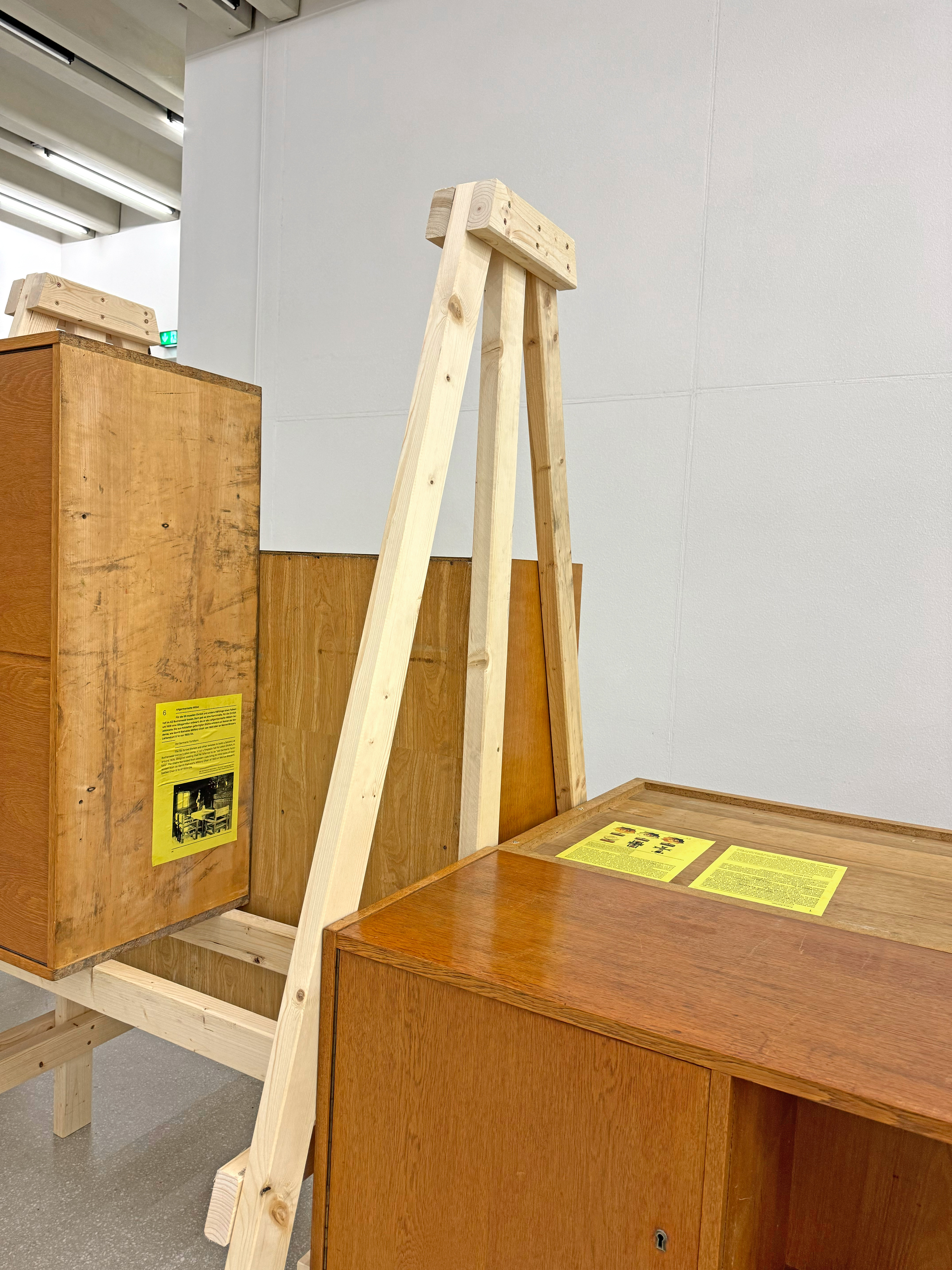
Bauhaus-Museum Weimar
Ausstellung: Bauhaus und Nationalsozialismus
Beitrag: Friedrich von Borries · Frieder Bohaumilitzky · Jens-Uwe Fischer.
Grafikdesign: Ingo Offermanns
Ausstellung: Bauhaus und Nationalsozialismus
Beitrag: Friedrich von Borries · Frieder Bohaumilitzky · Jens-Uwe Fischer.
Grafikdesign: Ingo Offermanns









„Ich denke, dass wir in unserem Gespräch gemerkt haben, dass es verschiedene Wege gibt, zu einem Verständnis zu gelangen. Ein Weg wäre vielleicht das eher utopische Denken. Der Versuch, sich über schöne und möglicherweise auch poetische Zitate und Ideen ein Dazwischen vorzustellen, das als produktive Metapher für die egalitäre, heterogene und vielsprachige Welt stehen kann, die wir suchen. Ein anderer Weg wäre vielleicht die Beschreibung einer Notwendigkeit, also über die Beobachtung von gegenwärtigen Problemen, ein Bild davon zu gewinnen, was für eine egalitäre, heterogene und vielsprachige Welt fehlt und zu überlegen, was dafür notwendig wäre. Spannend finde ich, dass sich mit diesen unterschiedlichen Wegen zur selben Idee gelangen lässt: Die Idee, dass etwas ungestaltet bleiben muss, unentschieden bleiben darf, offen gehalten werden soll, dazwischen bleiben kann oder – wie du geschrieben hast – paradoxerweise nur in seiner Identitätslosigkeit und Ungreifbarkeit begriffen werden kann. Auch die Idee, ein Designinteresse an etwas zu haben, das man eigentlich gerade nicht designen will, ist erstmal ein Paradox. Aber es scheint mir das zu sein, wonach wir suchen: ein Design ohne Design.“
Torben Körschkes · Frieder Bohaumilitzky, “Zwischen den Stühlen stehen. Ein Gespräch über das Dazwischen als metaphorische Figur und Herausforderung der Gestaltung”, in: Jörg Sternagel · Eva Schürmann (Hg.), Denken des Medialen. Zur Bedeutung des »Dazwischen«, transcript, Bielefeld, 2024, S. 211-224.
→ PDF (de)
→ PDF (de)
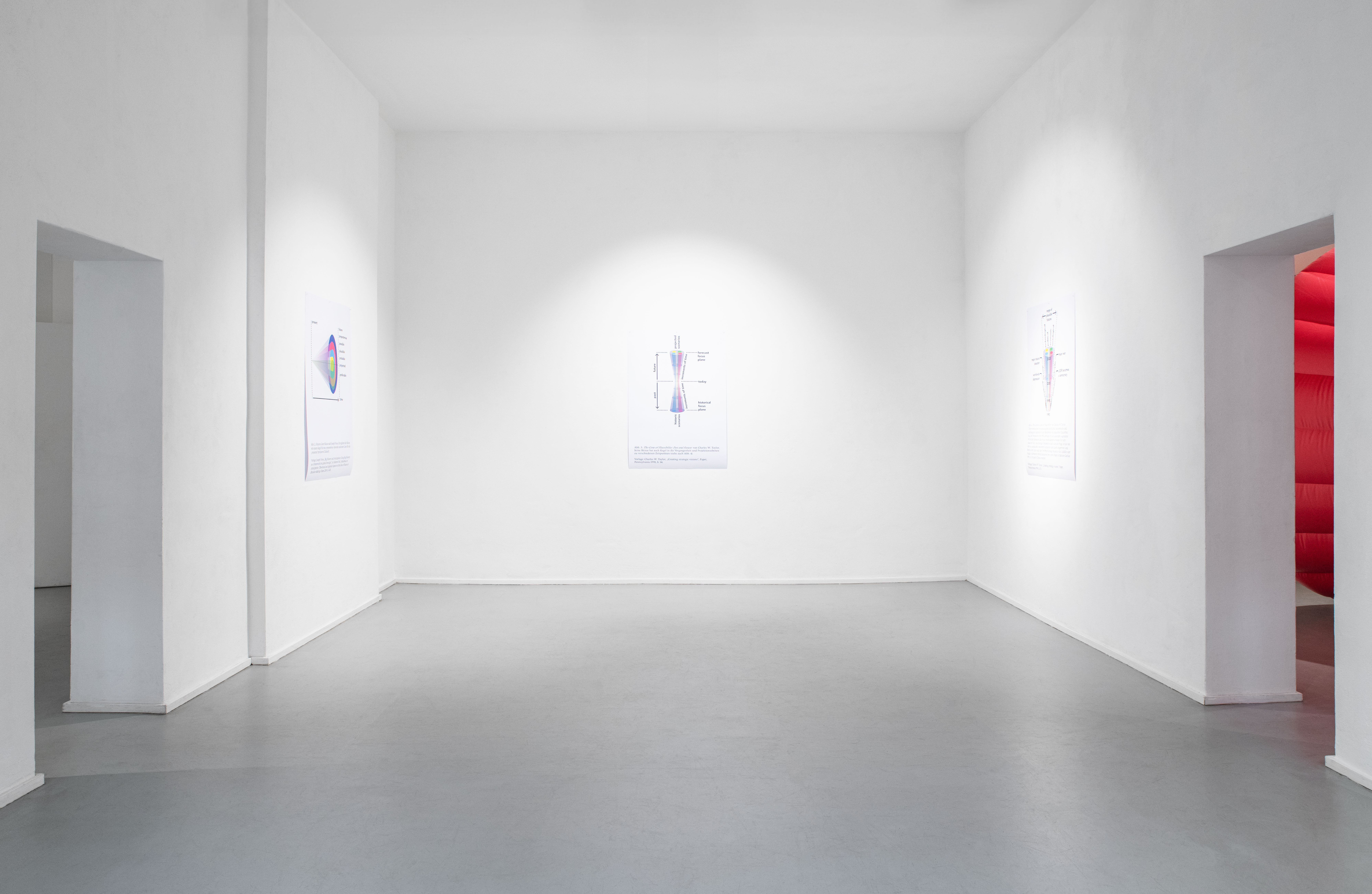
When it comes to speculation in art in general and design in particular, there is one sketch that is repeatedly used as an illustration. The illustration is called Futures Cone and has been circulating for decades in different variations among futurists, foresight experts, artists and designers. It always consists of differently colored cones whose nested funnels open into the future. The various adaptations and the context in which they were created refer to different aims of speculation and different ideas of the present and the future.
Fußnoten zur Zukunft is an experimental essay exhibition that associatively traces the stories associated with the history of the Futures Cone, reads them as artifacts and makes them accessible in a sensory and physical directory of sources. It is based on the text "Die Ambiguität der Spekulation. Futures Cone-Skizzen und ihre Kontexte" from the publication Specology. Zu einer ästhetischen Forschung, published by Hamburg-based Adocs-Verlag in 2023. This text is made accessible via a flyer that can be unfolded into both a poster and a mini-publication.
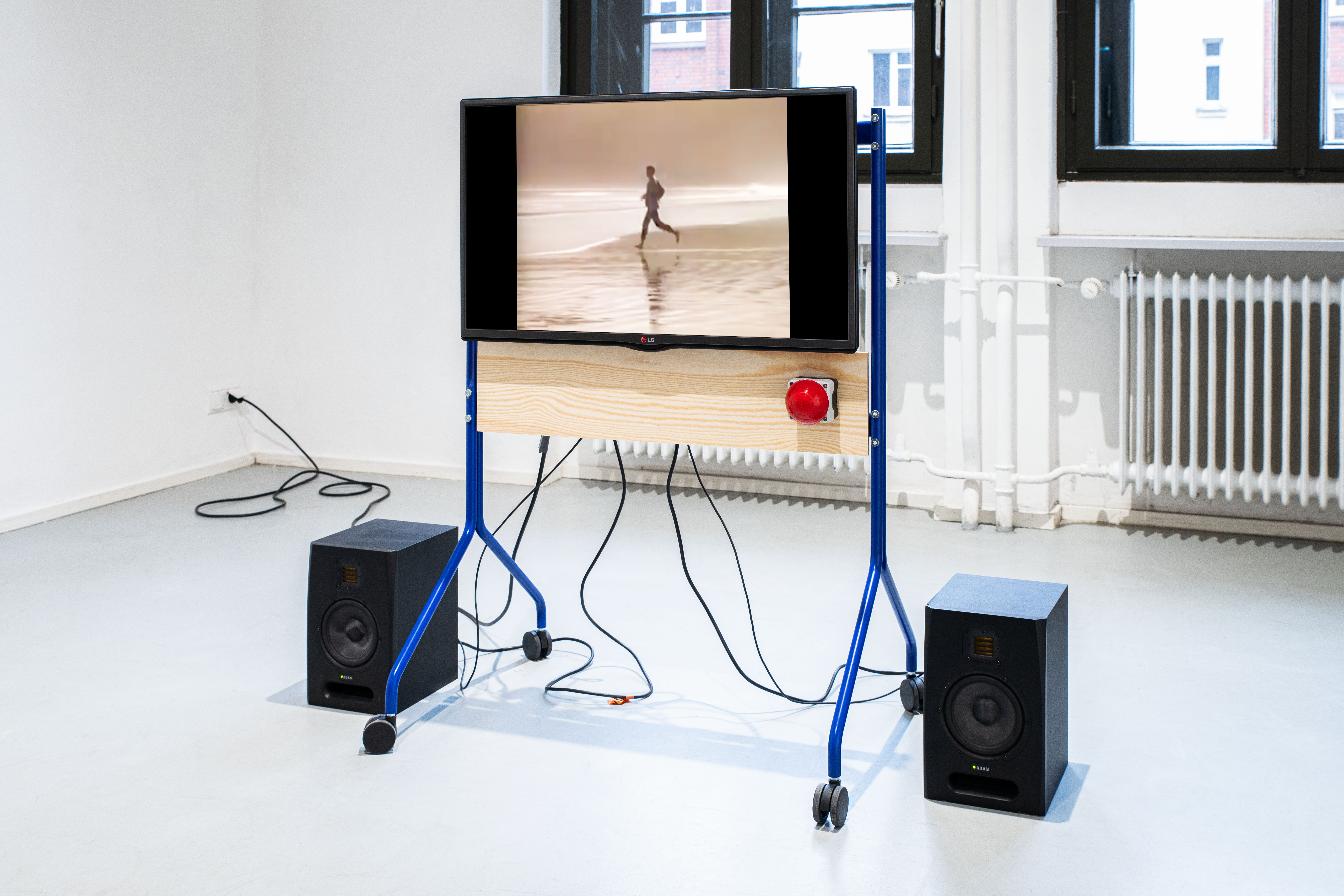
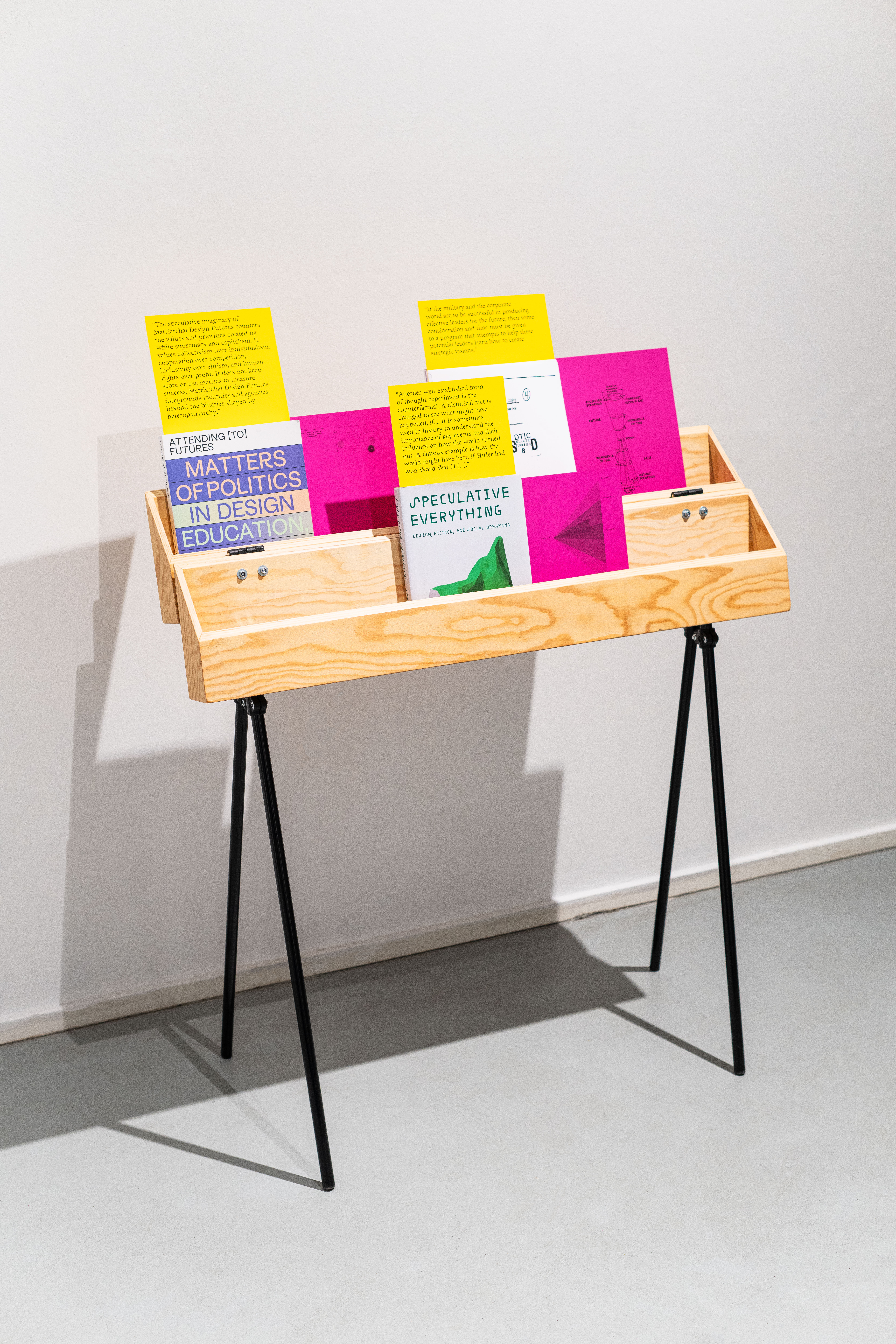


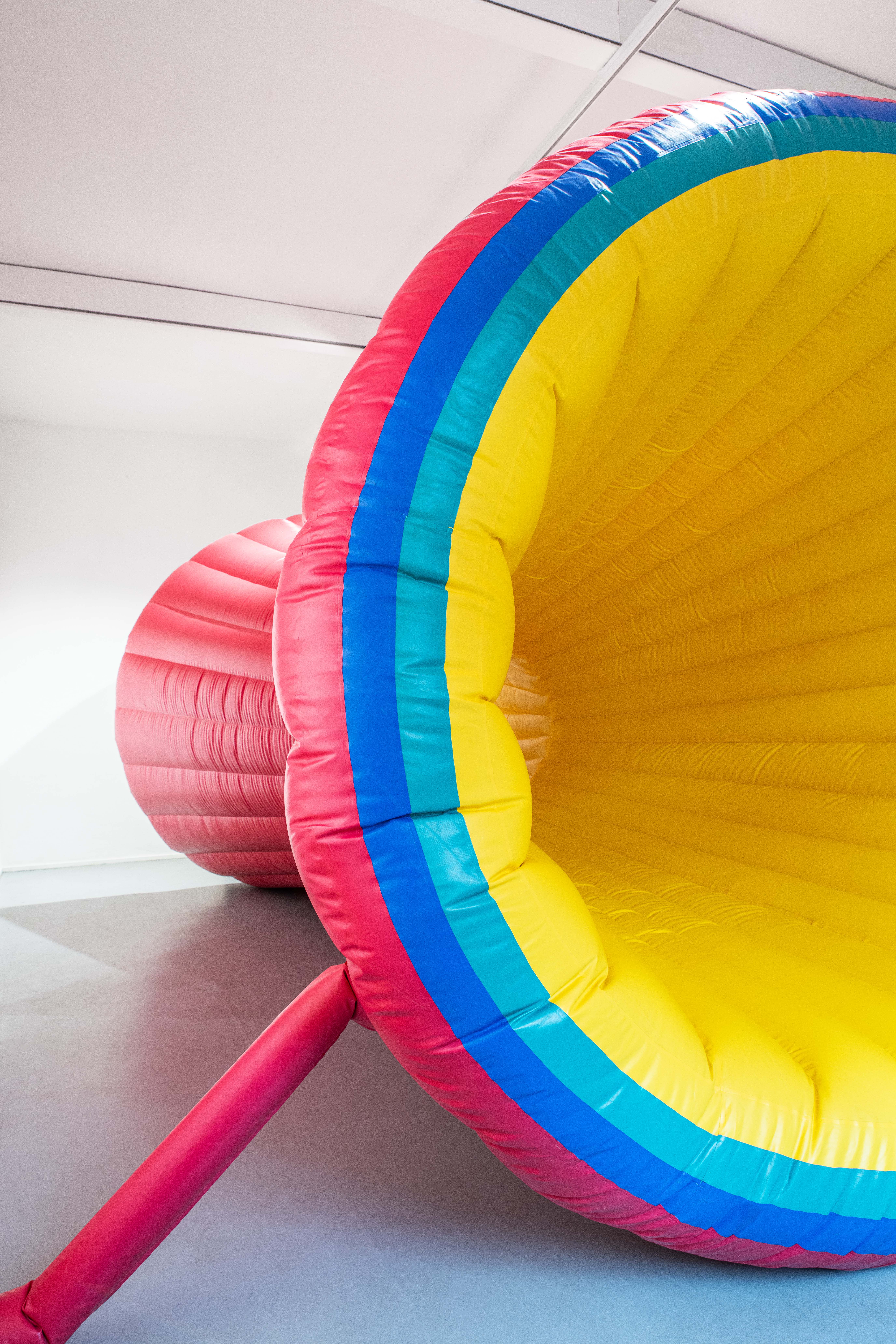
Frappant Galerie, Hamburg
Exhibition: studio lose (Frieder Bohaumilitzky · Ina Römling · Torben Körschkes)
Text: Frieder Bohaumilitzky
Flyer: HEFT Kollektiv (Ina Römling · Torben Körschkes)
Photos: Maik Gräf
Funded by the Freie und Hansestadt Hamburg, ministry of culture and media.
Exhibition: studio lose (Frieder Bohaumilitzky · Ina Römling · Torben Körschkes)
Text: Frieder Bohaumilitzky
Flyer: HEFT Kollektiv (Ina Römling · Torben Körschkes)
Photos: Maik Gräf
Funded by the Freie und Hansestadt Hamburg, ministry of culture and media.

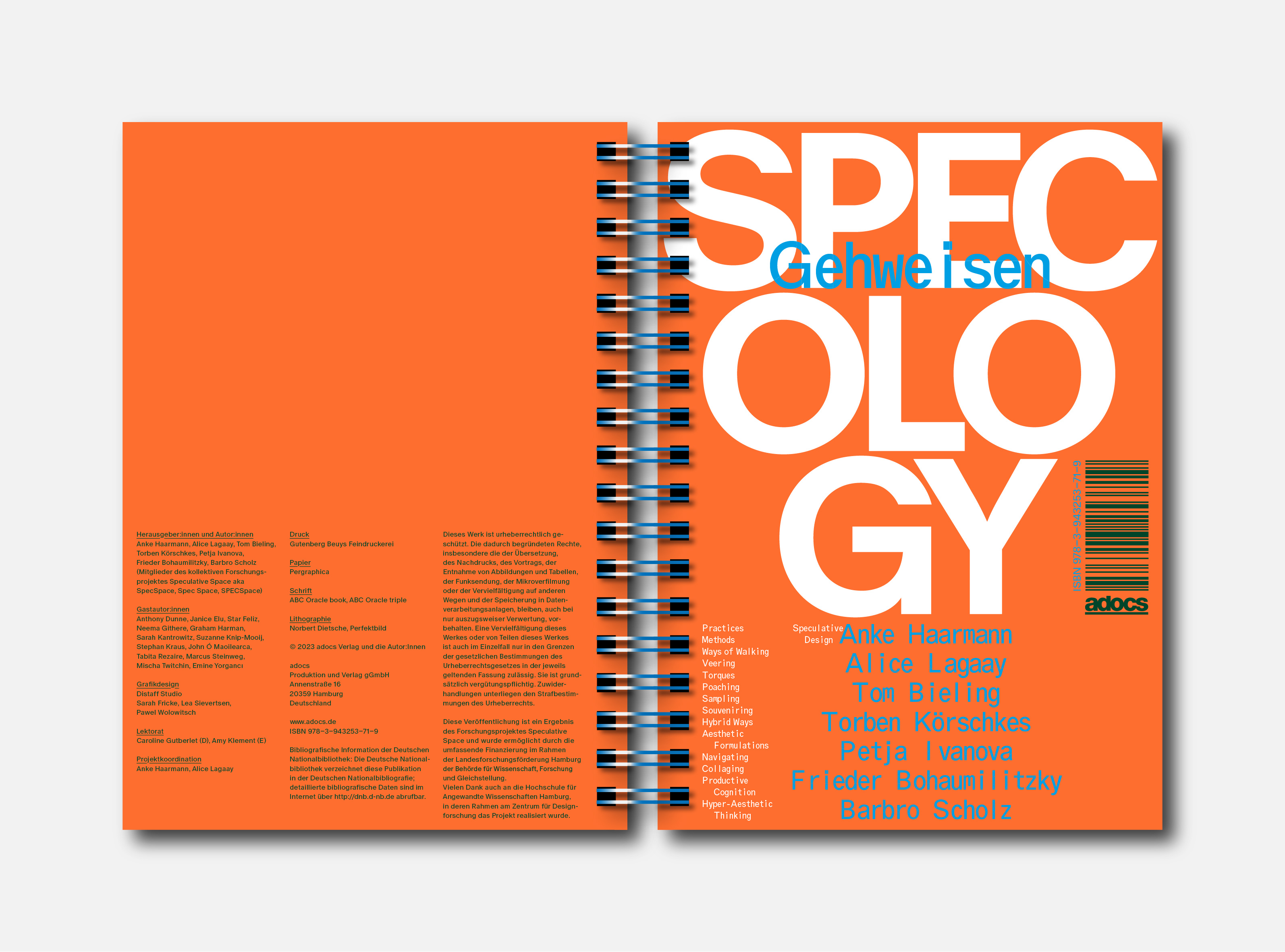

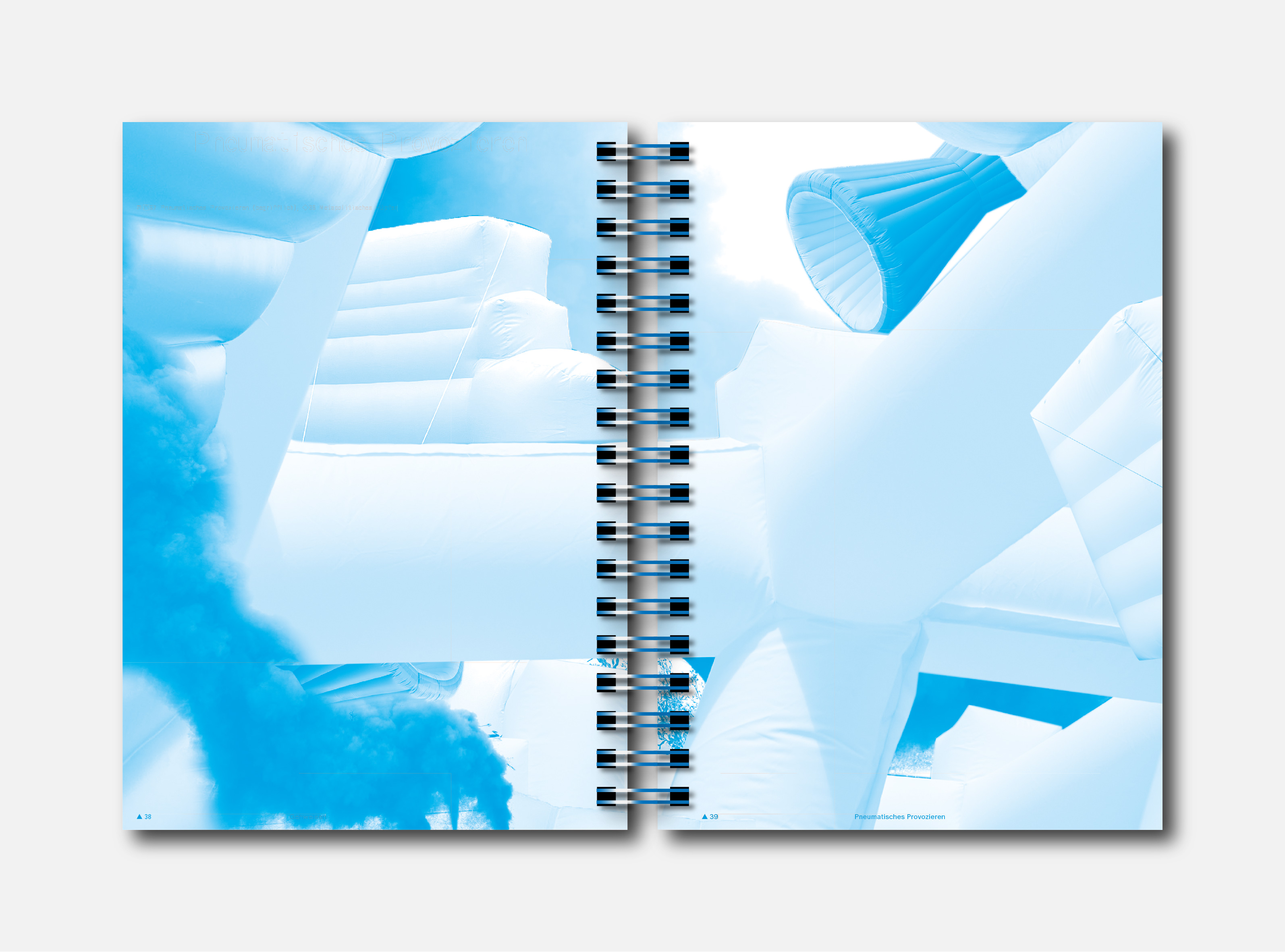


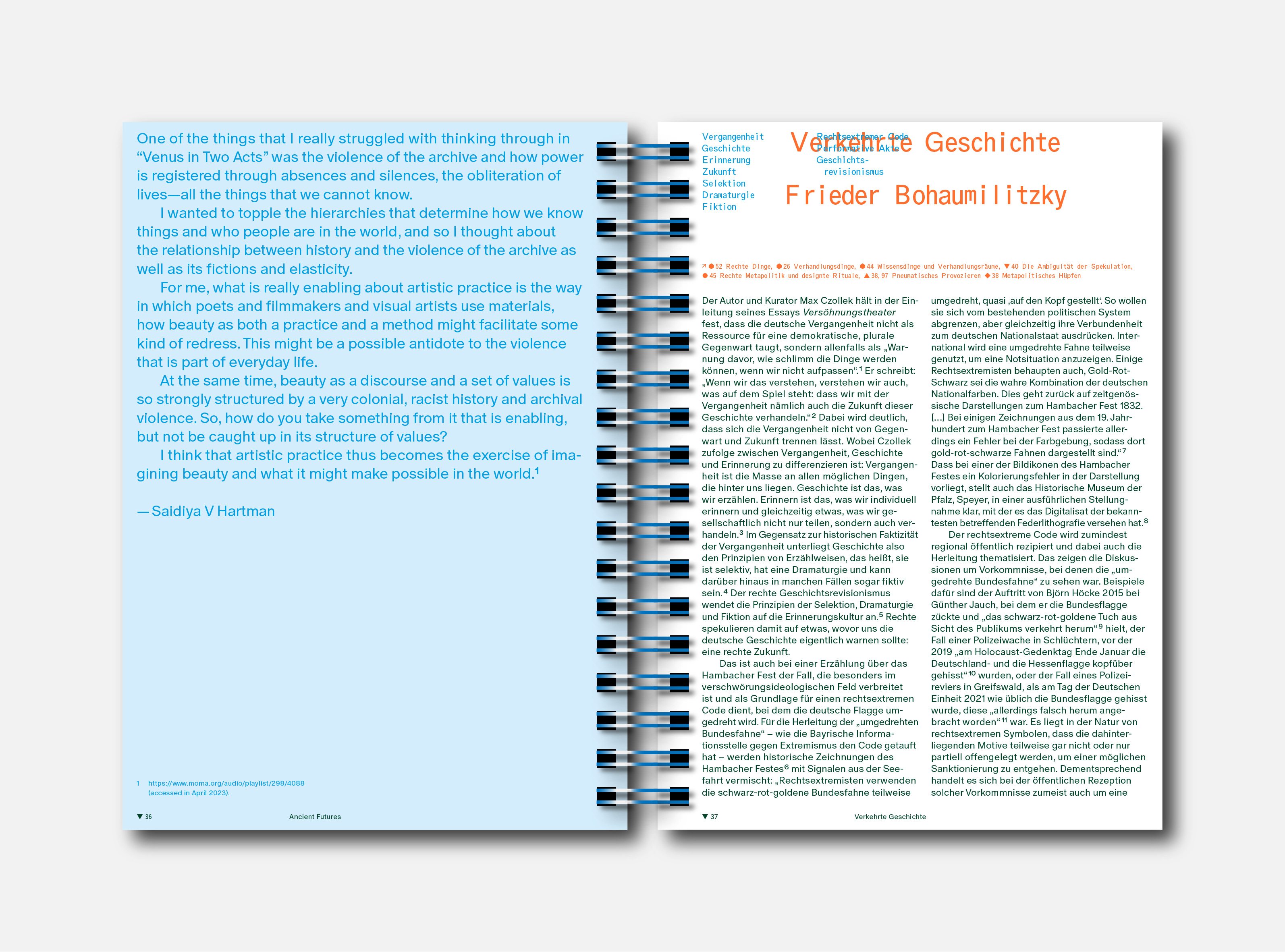


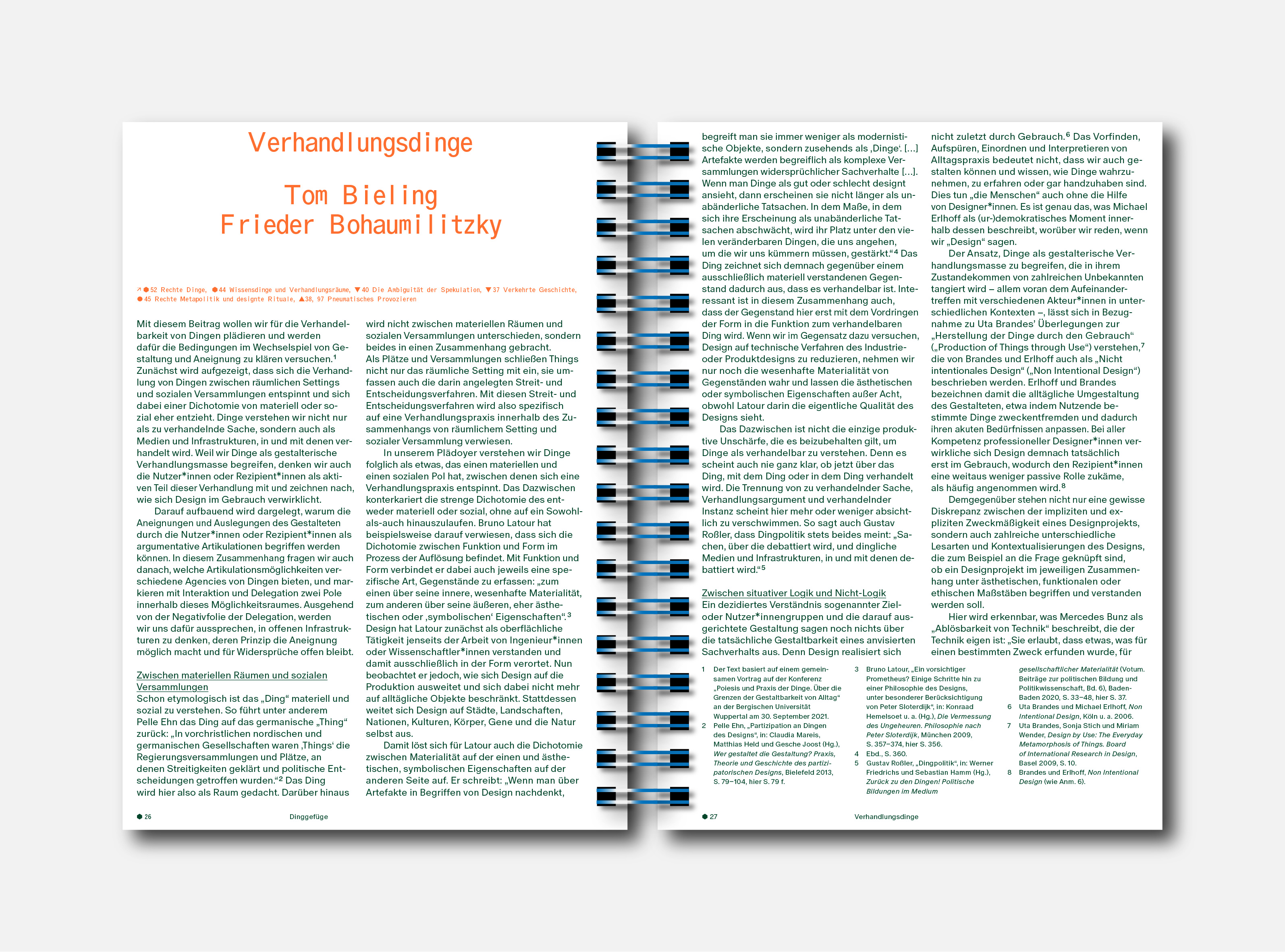


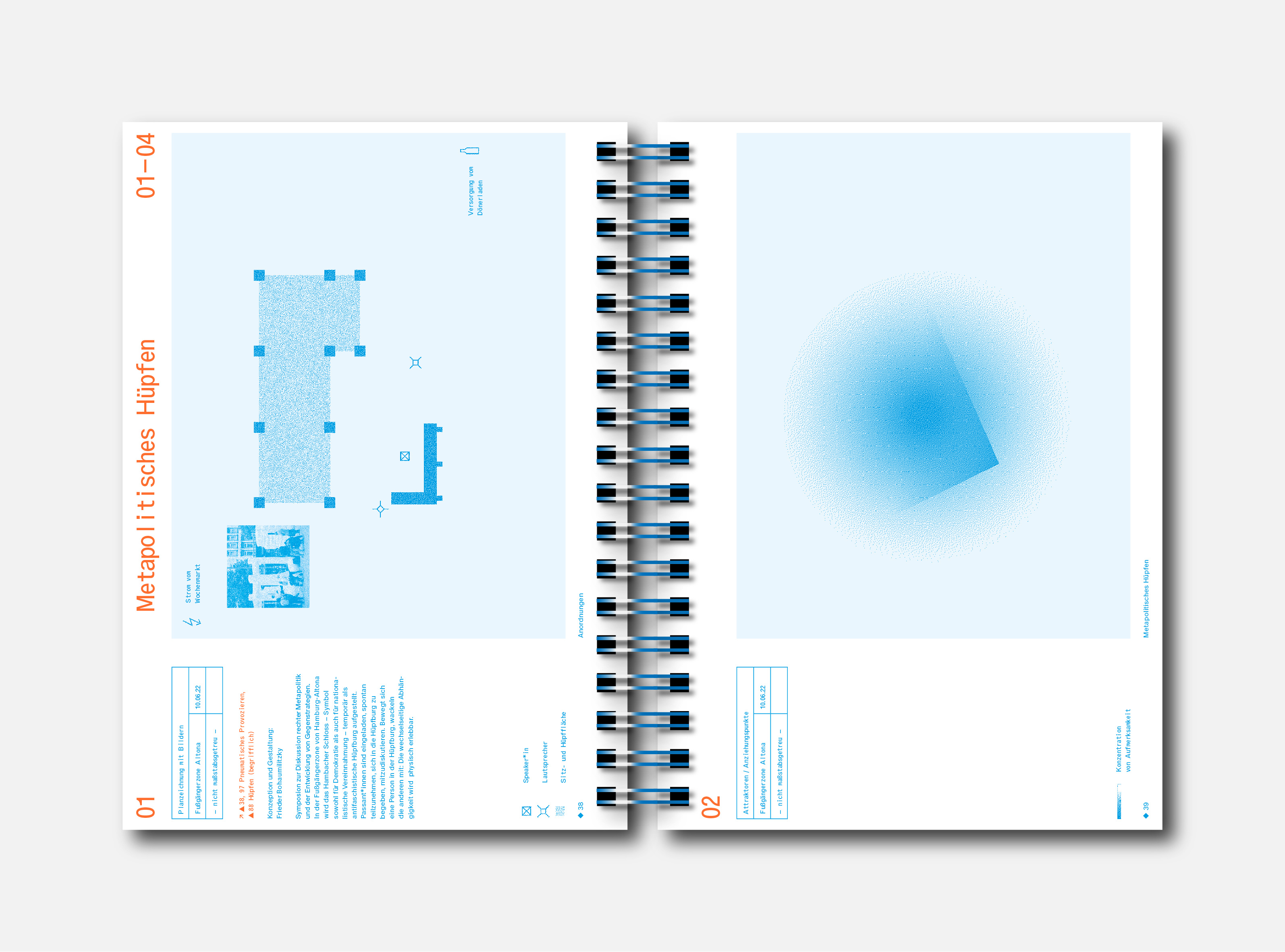


Der Begriff der Spekulation ist erst vor kurzem im Feld ästhetischer Praxis aufgetaucht. Er entfaltet aber eine bemerkenswerte Wirkung und löst eine neue Form der gestalterischen, künstlerischen, provokativen, experimentellen Produktion und ästhetischen Forschung aus. Es entwickelt sich ein neues Verständnis von kollektiver, risikobereiter, hybrider Praxis. Diese Entwicklung führt zur Specology.
Mit der Specology als einer neuen ästhetischen Wissenschaft können wir uns auf ein ebenso imaginäres wie produktives Tableau begeben, auf dem sich erkennende und gestaltende Praktiken und Methoden (Gehweisen), Einsichtsformen (Anordnungen) sowie Medien und Materialien (Dinggefüge), chronopolitische Forschungsfelder (Ancient Futures) und Geisteshaltungen (Magical Expertise) tummeln.
Ziel dieses Buches ist es, die Potenziale und Herausforderungen von und für spekulative-ästhetische Forschung zu erfassen und diskursfähig zu machen – nicht nur auf einer begrifflichen Ebene, sondern auf vielen Ebenen ästhetischer und kritischer Praxis. Die Publikation greift den seit Mitte der 2000er geführten Diskurs um spekulatives Design auf, nähert sich diesem kritisch und liefert Anknüpfungspunkte für Wissens- und Denkpraktiken verschiedener künstlerischer, gestalterischer, philosophischer, kulturtheoretischer oder auch gänzlich außerakademischer Felder.
Die Publikation wurde im Speculative Space entwickelt, kuratiert, verantwortet, zusammengestellt, herausgegeben, durchgearbeitet, geformt von den Forschungskompliz:innen Haarmann, Lagaay, Bieling, Körschkes, Ivanova, Bohaumilitzky, Scholz in Kollaboration mit den Grafikdesignerinnen von distaff studio und in Zusammenarbeit mit Stephan Kraus vertont.
SpecSpace: Anke Haarmann · Alice Lagaay · Tom Bieling · Torben Körschkes · Petja Ivanova · Frieder Bohaumilitzky · Barbro Scholz (Hg.), Specology. Zu einer ästhetischen Forschung, Adocs, Hamburg 2023.
ISBN: 9783943253719
420 Seiten
Grafik Design: Distaff Studio
Vertonung: Stephan Kraus
ISBN: 9783943253719
420 Seiten
Grafik Design: Distaff Studio
Vertonung: Stephan Kraus
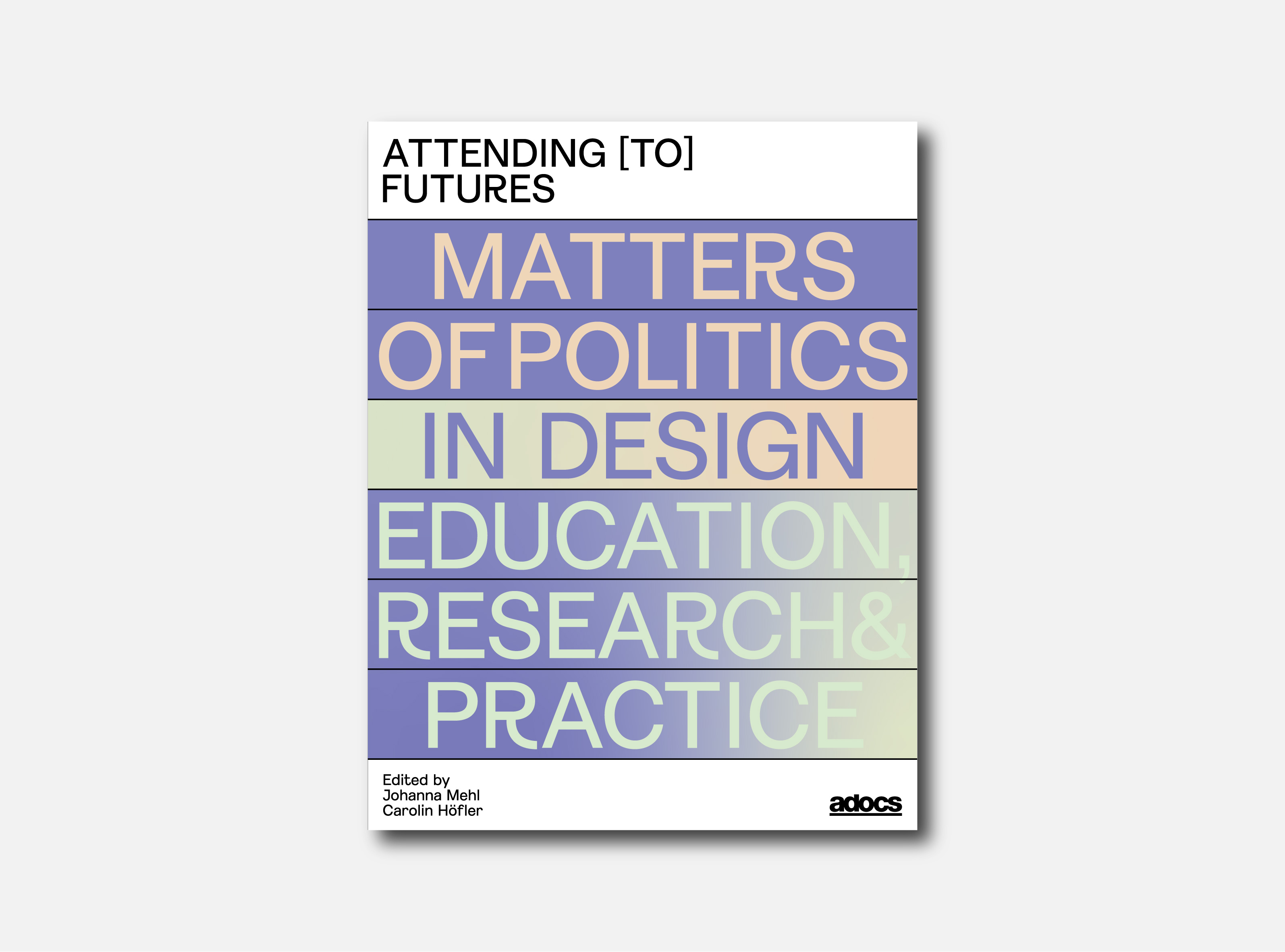
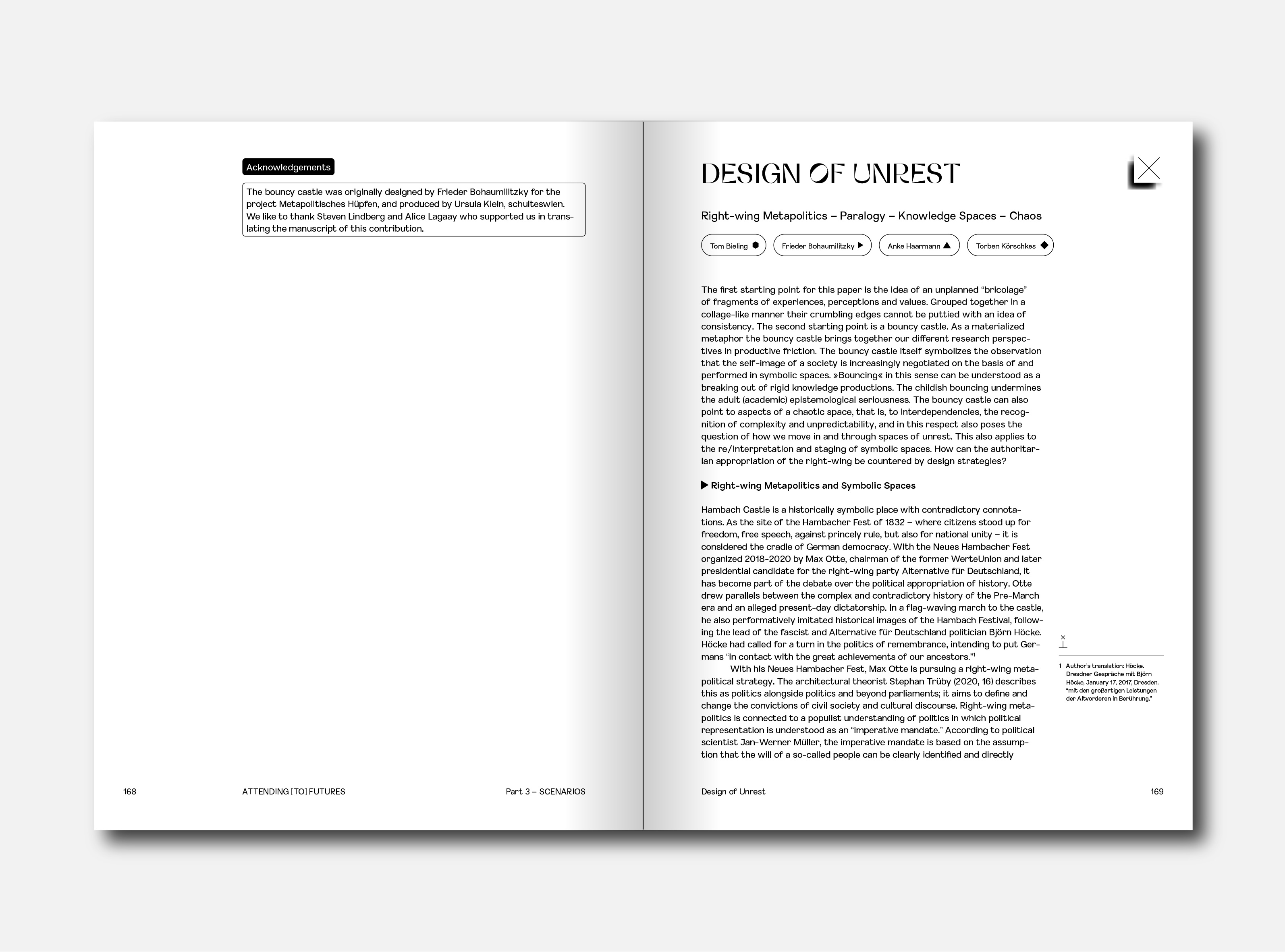
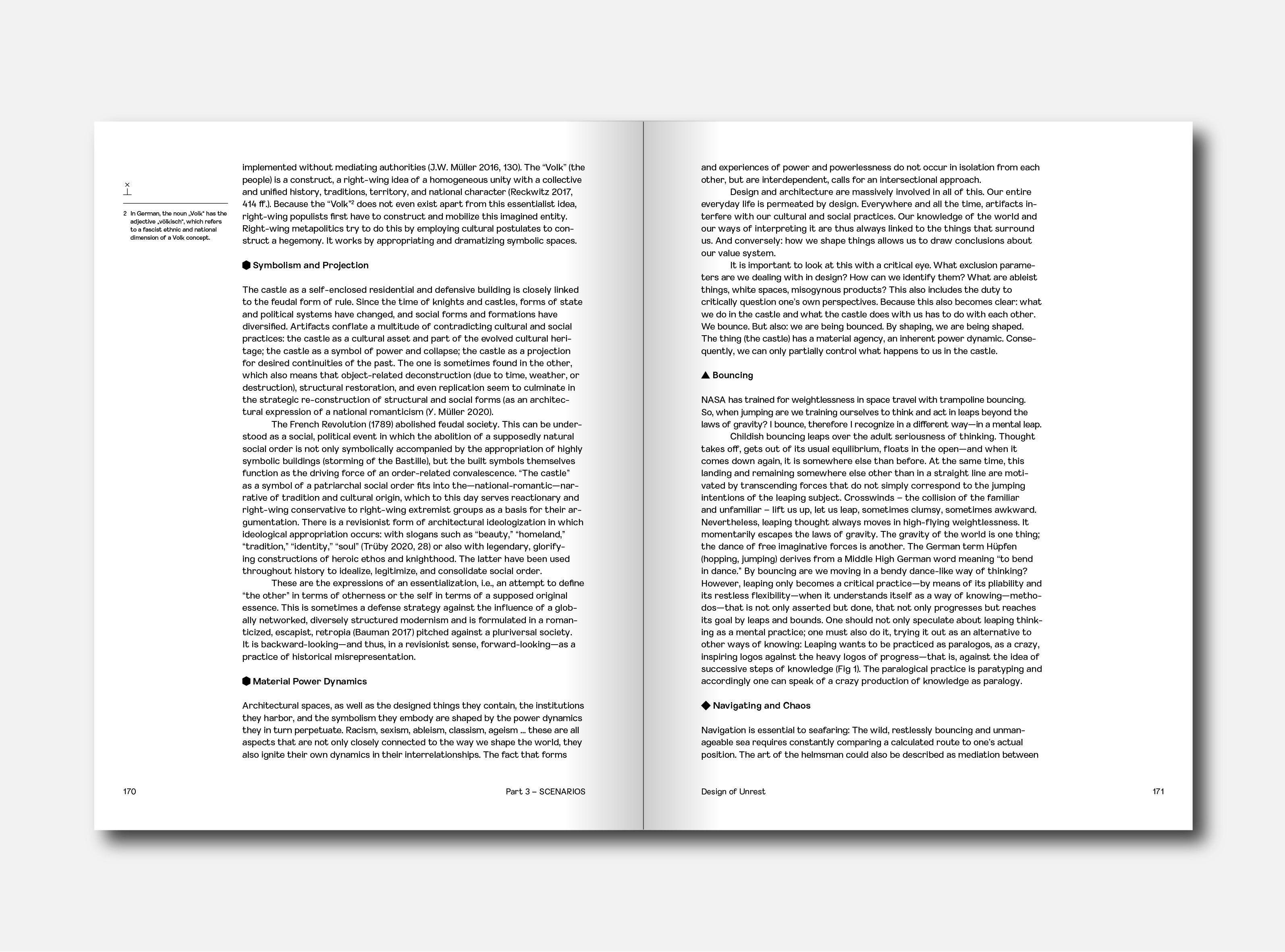
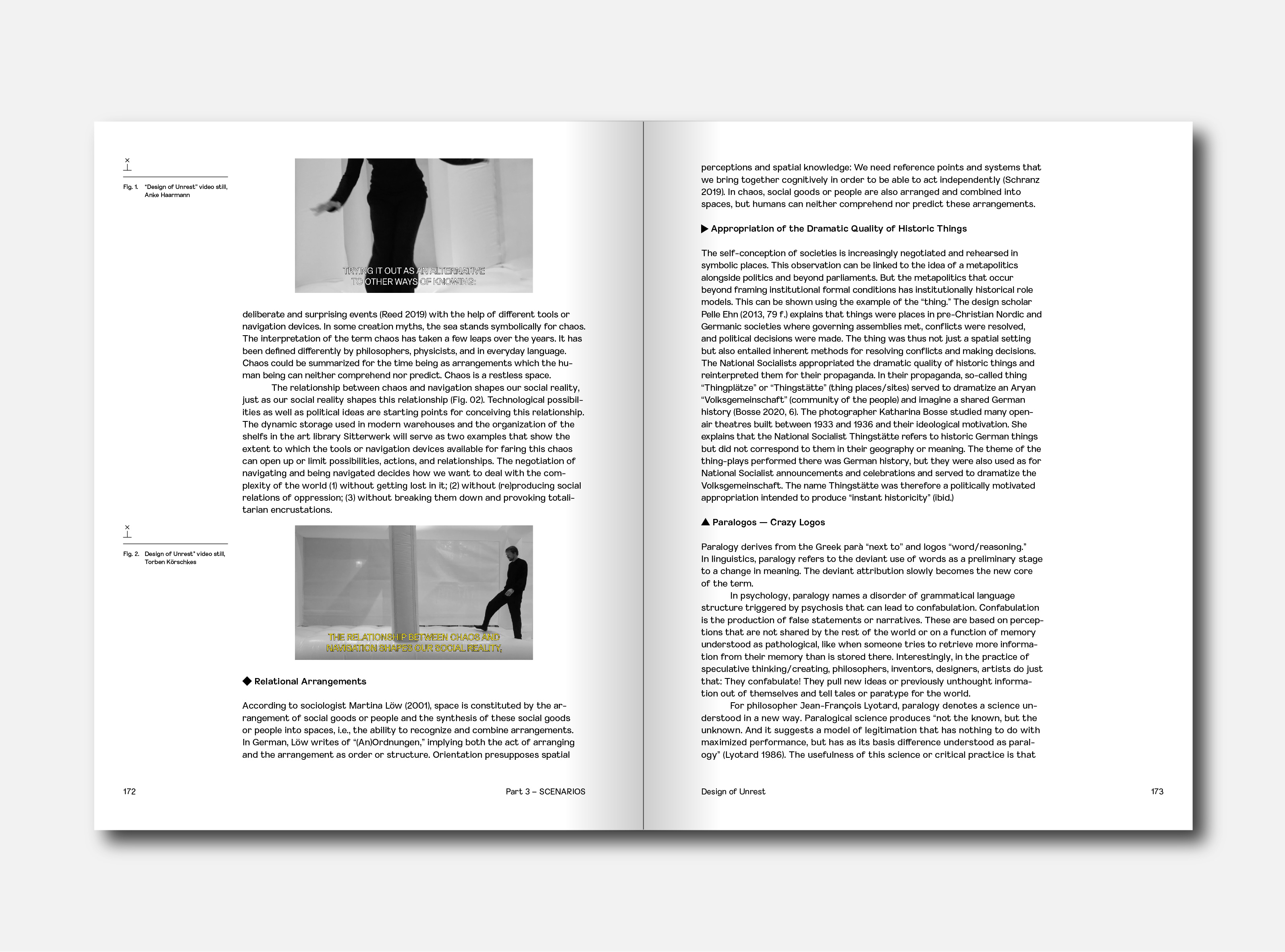

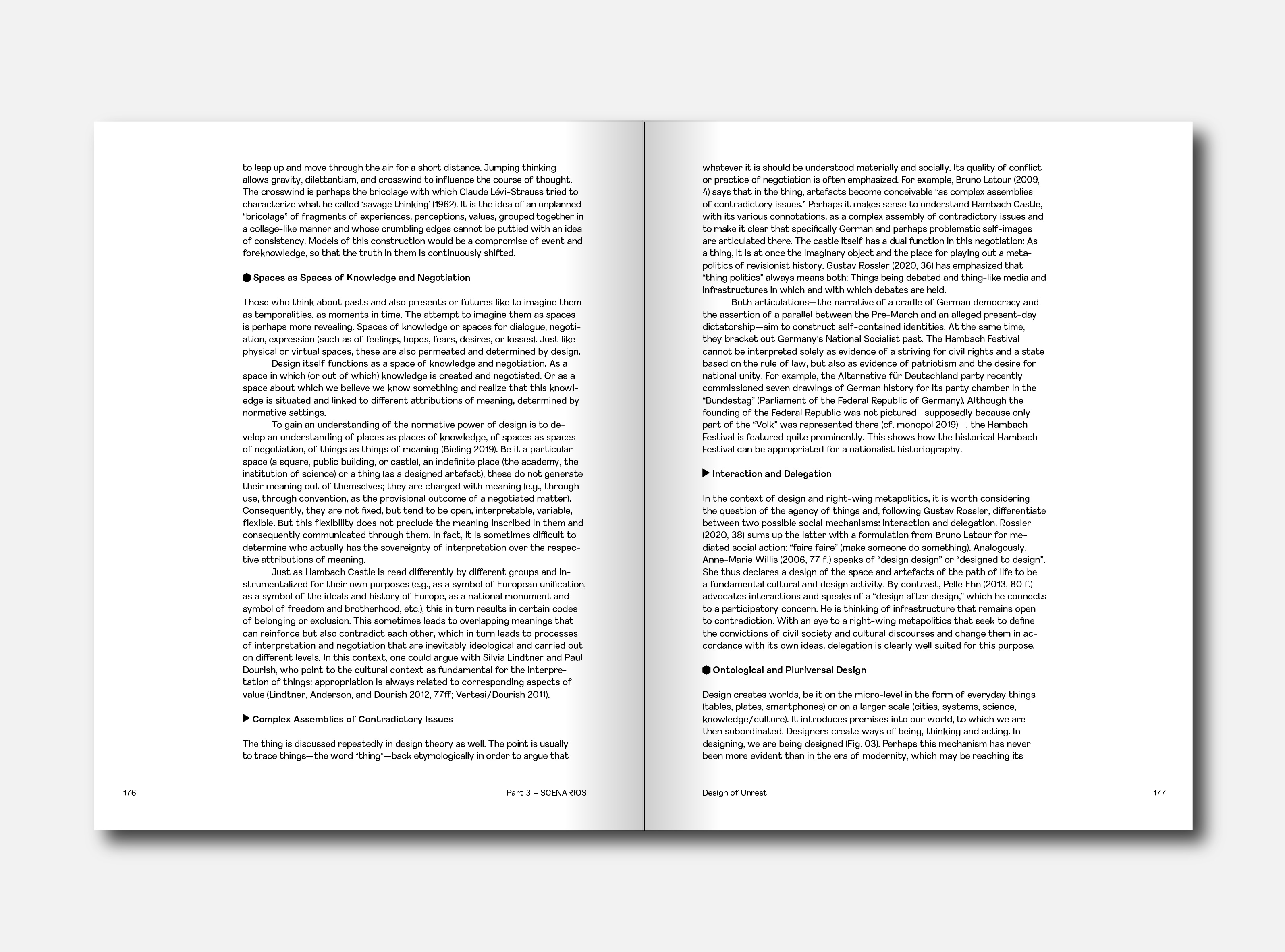


“The first starting point for this paper is the idea of an unplanned “bricolage of fragments of experiences, perceptions and values. Grouped together in a collage-like manner their crumbling edges cannot be puttied with an idea of consistency. The second starting point is a bouncy castle. As a materialized metaphor the bouncy castle brings together our different research perspec- tives in productive friction. The bouncy castle itself symbolizes the observation that the self-image of a society is increasingly negotiated on the basis of and performed in symbolic spaces. “Bouncing” in this sense can be understood as a breaking out of rigid knowledge productions. The childish bouncing undermines the adult (academic) epistemological seriousness. The bouncy castle can also point to aspects of a chaotic space, that is, to interdependencies, the recognition of complexity and unpredictability, and in this respect also poses the question of how we move in and through spaces of unrest. This also applies to the re/interpretation and staging of symbolic spaces. How can the authoritarian appropriation of the right-wing be countered by design strategies?”
Tom Bieling · Frieder Bohaumilitzky · Anke Haarmann · Torben Körschkes, “Design of Unrest. Right-wing Metapolitics – Paralogy – Knowledge Spaces – Chaos”, in: Johanna Mehl · Carolin Höfler, Attending [to] Futures. Matters of Politics in Design Education, Research, Practice, Adocs, Hamburg 2023, S. 168-181.
→ PDF (eng)
→ PDF (eng)